Wellness 2022: Detox – Rest & Integrate
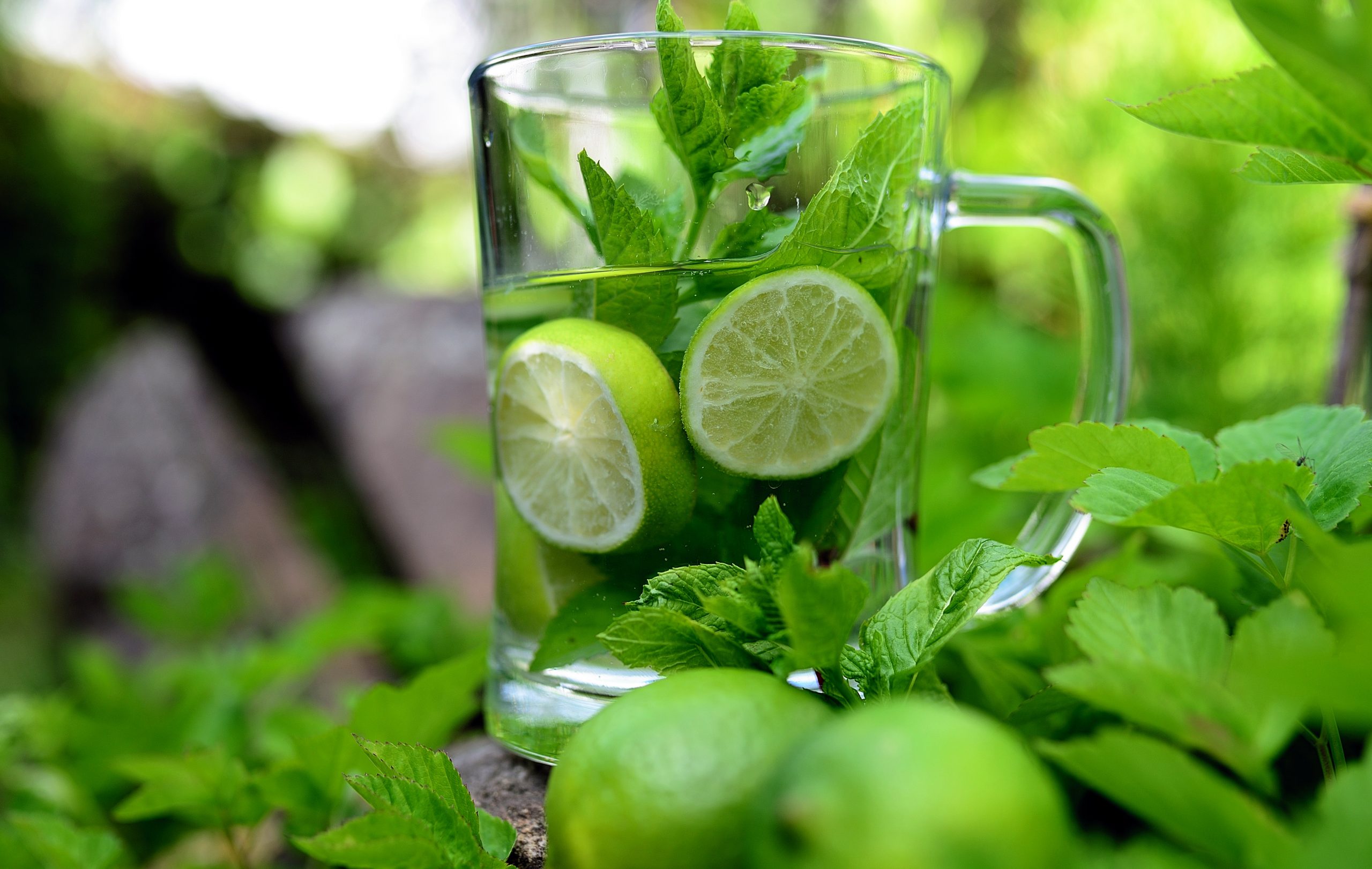
Other ways to Detox
Here are some other ways you can eliminate toxins from your body.
Dry Brushing

Dry brushing is pretty much exactly what it sounds like. You take a body brush (look for one with firm, natural bristles) and use it to gently massage your body in an upward motion. This process brightens the skin and also makes your moisturizer more effective, as it sloughs off dead skin. And as the name implies, the brush and your skin should be—you guessed it—dry while you do it.
While dry brushing isn’t the be-all end-all for attaining perfect skin, it does have its own set of benefits, from plumping to exfoliating.
- Boosts circulation: If you’ve noticed that your skin is red after dry brushing, it’s not just a result of irritation, and it actually isn’t a cause for concern. The redness, which is just a bit of inflammation, is the result of increased circulation in the areas you’ve been dry brushing. Your body is simply pushing more blood to those areas.
- Aids with lymphatic drainage: Aside from leaving you with glowing skin, dry brushing can encourage lymphatic drainage. All blood carries lymph fluid, which filters through the lymph nodes. Dry brushing speeds up the rate of blood pumping, which helps get the lymph through the body, therefore removing toxins and pathogens more quickly.
- Exfoliates dead skin: As with all methods of exfoliating, dry brushing gets rid of the day’s dirt and oil as well as dead skin cells. The result is increased cell turnover and more radiant, smooth skin.
- Plumps the skin: Many swear their cellulite is less noticeable after dry brushing, due to temporary plumping effect it has on the skin. It can even help with the appearance of sun damage.
Dry Brushing Steps
There’s a method to dry brushing and it doesn’t involve randomly scrubbing a brush all over your body. Here are the proper steps to take note of:
- To dry-brush properly, first make sure your skin is completely dry.
- Starting at your ankle, move your brush over your skin in long, circular motions that go in the direction of your heart.
- Maintain a slightly firm pressure as you dry brush.
Dry-brush right before you shower. After you rinse off, slather on a moisturizer to seal in all of your hard work.
Detox Massage

A detox massage is a form of deep tissue massage therapy that focuses on the body’s muscle tissues, lymphatic system, and mental stimulation. Daily life brings toxins from all angles – artificial additives, pesticides, junk food, and other environmental or recreational toxins that clog the body and prevent a healthy, happy body and mind. With detox massage, the key areas for waste removal are stimulated, making it easier for the body to release toxins.
Detox massage techniques help strengthen and relax your muscles; alternating pressures on muscles help to strengthen, stimulate, and ultimately release tension and toxins that have built up.
Detox massage, like all massage, helps improve circulation throughout the body. Better circulation means more oxygen, nutrients, and energy for the entire body!
The lymphatic system is highly responsible for most of the body’s natural detoxification. The lymph system depends on strong muscles, efficient breathing, and exercise to push toxins and wastes through and out of the body. A detox massage helps stimulate the lymphatic system, making it easier for the body to release wastes and avoid toxin build-up that would result in lethargy or illness.
When it comes to your mind, a detox massage can help relieve stress and exhaustion. It is easy to neglect self-care, and your mind suffers for it! Detox massage is a great way to take care of an overworked mind and give yourself a boost of fresh energy.
Epsom Salt Baths
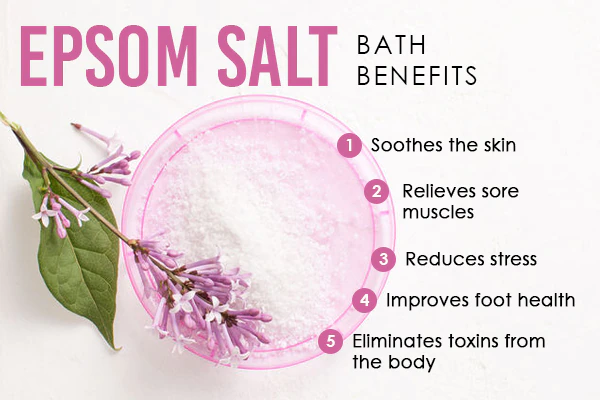
An Epsom salt detox is a warm bath with Epsom salt that may help improve the body’s natural detoxification process and promote healing.
How to take an Epsom salt detox bath
It is recommended to only purchase Epsom salt that has USP on the label, which means it has been tested for human use, according to standards set by the United States Food and Drug Association (FDA). The packaging should have ingredient and drug fact information printed on it. Epsom salt can be purchased at a health food store, some pharmacies, or online.
To take an Epsom salt bath, add 2 cups of Epsom salt when running a bath in a standard size bathtub. The salt will quickly dissolve if put under running water. The water should be warm but not too hot. Temperatures between 92°F and 100°F (33°C and 37°C) are ideal. A person can then soak in the bath for 12 to 20 minutes, or longer if desired, and they should avoid using soap. People should rest for at least 1 hour after a detox bath or take a bath at bedtime so that they can go to sleep afterward.
Other things that can be added to an Epsom salt bath to enhance its effects include:
Olive oil
Olive oil contains antioxidants and can also help soften the skin when added to a bath. A person can use olive oil by adding ½ a cup of the oil as the bath is filling with water.
It is essential to be cautious when getting in and out of the bathtub to avoid slipping, as the oil can make the bath’s surface slippery.
Using olive oil in a bath is not recommended for children or older adults who are prone to falling.
Essential oils
Adding therapeutic oils can make a detox bath more relaxing. Some oils people can try include:
- lavender
- vanilla
- bergamot
- frankincense
- eucalyptus
Essential oil needs to be diluted before being applied to skin, and so it is best to dilute it with a carrier oil before bathing.
A mixture of 3 to 5 drops of essential oil per ½ to 1 ounce of carrier oil is usual. Carrier oils can be sweet almond oil, coconut oil, or even olive oil. A little essential oil goes a long way, so it is important to add only a few drops of the diluted oil into a full bath.
Baking Soda
Baking soda has been shown to have antifungal properties and may help reduce irritating germs. It may also soften the skin and reduce itchiness.
Wellness 2022: Detox – Takeaway

Time to Detox

Beginning next week we are going to truly focus on our detox protocol. It is important that you have plenty of the recipes we have sent you ready to go. This detox protocol comes in 2 phases. We hope you will dive in all the way…BUT know that you can choose to do everything each day, or you can leave some things out if you are not comfortable with it.
Protocol First 5-7 Days
EARLY MORNING:
- Oil Pulling: Scoop 1/2 tbsp coconut oil and swish it in your mouth for 2-5 minutes. Spit and scrape your tongue with a tongue scraper or a simple spoon. Brush teeth and rinse mouth well after.
- Drink 1 tbsp of Bentonite clay in 8oz of filtered water. (This is the liquid form and can be purchased online or at our local health food store)
- Use warm water always. and stir while drinking not to settle on the bottom. Follow this with 2 more 6-8oz of water.
- Wait 20-30 minutes and eat breakfast.
- *PLEASE, SHAKE THE BENTONITE CLAY BOTTLE VIGOROUSLY BEFORE POURING IN THE CUP AS IT SETTLES ON THE BOTTOM!
BREAKFAST
- Boiled Egg, 1 oz of imported goat cheese, 1/2 avocado, a handful of grape or cherry tomatoes, 1/3 cup black olives
or…
- Rolled Oats with 1 tbsp chia seeds or flax seeds, a handful of dry fruit of choice of warm water or a nut milk. Add some toasted walnuts or another nut of choice. This is easy if you make this the night before, known as “overnight oats”.
- Supplements: Vitamin C, D3, and B complex (if you have got the last two).
- One hour after breakfast have a cup of milk thistle and dandelion tea (you can steep them
together). Enjoy this hot or cold. I add LOTS of lemons to help with the flavor. - After you drink the tea, drink two 6-8oz of warm or room temperature water to flush the toxins again.
- Wait 30-45 minutes and only if you feel hungry, eat a snack
OPTIONAL SNACK
If you didn’t have nuts for breakfast, have them as a snack along with some other healthy options below:
- Hummus with carrots or other veggies
or…
- Fruit
or…
- A handful of nuts
LUNCH (This will be your largest meal of the day)
Protein boost salad: I use a variety of greens and other raw veggies. Top your salad with the options below:
- Pre-cooked Whole Grain of your choice, 2/3 cup, topped with steamed or roasted vegetables of choice and sweet curry dressing…
or…
- Cooked Garbanzo beans, 2/3 cup, rinsed and drained well with halved grape tomatoes, thinly sliced 1/4 purple onion, a handful of chopped cilantro and sweet apple cider vinegar
- Fruit
Wait for 1h and drink a cup of St. John’s tea, followed by one 6-8 oz of:
- Warm lemon water
or…
- Apple cider vinegar drink or shot.
- 1 tbs vinegar in 8oz of water
or…
- 1 tbs vinegar, mixed with a little honey
- Drink this “shot” and follow immediately with 8oz of water
- After 30-45 minutes have a snack only if you are hungry
SNACK
- Cilantro Pesto, 1-2 tbs.
- Serve with celery or carrot sticks. I always like a squeeze of lemon to finish my pesto with.
DINNER (Your lightest meal of the day)
Vegetable soup. Using 1 -2 cups of the pre-made stock, add filtered water if it is concentrated. as well as any chopped vegetables you like. Bring to boil and cook for 20 minutes. Vegetables need to be overcooked, almost mushy for easy digestion. Have as many portions as you want. You can add chopped parsley, dill, or cilantro. You can mash 1/4 avocado to make the soup creamier. You can sprinkle
chia or flax seeds or squeeze some lemon juice. You can add Cayenne pepper for an extra bite or chopped jalapeño pepper.
Customize this soup each day to the flavors you are in the mood for:
- Italian
- Southwestern
- Asian
Have fun with it.
BEFORE BED
- After dinner wait at least 1 hour
- Enjoy mint tea before bed to ease digestion and help with restful sleep
JOURNAL ENTRY:
Visualize yourself working on this protocol. Envision yourself feeling better than you have in a long time. Your body deserves this break. This is a form of self-love.
Writing: Self Love: What have you done to show self-love over this program…what else can you continue to do to take care of yourself.
Wellness 2022: Detox – Further Resources

Apple Cider Vinegar
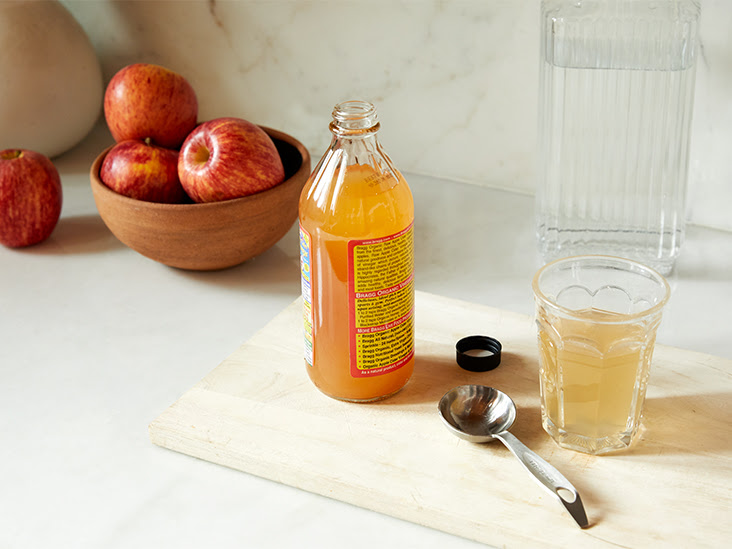
Apple cider vinegar is a popular home remedy. People have used it for centuries in cooking and medicine. Many people claim it can relieve a wide range of health complaints, but you may wonder what the research says. Apple cider vinegar has various healthful properties, including antimicrobial and antioxidant effects. What’s more, evidence suggests it could possibly offer health benefits, such as:
- aiding weight loss
- reducing cholesterol
- lowering blood sugar levels
- improving the symptoms of diabetes
However, little research exists, and further studies are needed before it can be recommended as an alternative therapy. Next we will look at the evidence behind 6 possible health benefits of apple cider vinegar.
1. High in healthful substances
Apple cider vinegar is made via a two-step process. First, the manufacturer exposes crushed apples to yeast, which ferments the sugars and turns them into alcohol. Next, adding bacteria further ferments the alcohol, turning it into acetic acid — the main active compound in vinegar. Acetic acid gives vinegar its strong sour smell and flavor. Researchers believe this acid is responsible for apple cider vinegar’s health benefits. Cider vinegars are 5–6% acetic acid. Organic, unfiltered apple cider vinegar also contains a substance called mother, which consists of strands of proteins, enzymes, and friendly bacteria that give the product a murky appearance. Some people believe that the mother is responsible for most of its health benefits, although there are currently no studies to support this. While apple cider vinegar does not contain many vitamins or minerals, it offers a small amount of potassium. Good quality brands also contain some amino acids and antioxidants.
SUMMARY
Apple cider vinegar is made by fermenting the sugar from apples. This turns them into acetic acid, which is a main active ingredient in vinegar and may be responsible for its health benefits.
2. Can help kill harmful bacteria
Vinegar can help kill pathogens, including bacteria. People have traditionally used vinegar for cleaning and disinfecting, treating nail fungus, lice, warts, and ear infections. Hippocrates, the father of modern medicine, used vinegar to clean wounds more than 2,000 years ago. Vinegar is also a food preservative. Studies show that it inhibits bacteria like E. coli from growing in and spoiling food. If you’re looking for a natural way to preserve your food, apple cider vinegar could help. Anecdotal reports also suggest that diluted apple cider vinegar could help with acne when applied to the skin, but there doesn’t seem to be any strong research to confirm this.
SUMMARY
The main substance in vinegar — acetic acid — can kill harmful bacteria or prevent them from multiplying. It has a history of use as a disinfectant and natural preservative.
3. May help lower blood sugar levels and manage diabetes
To date, one of the most convincing applications of vinegar is helping treat type 2 diabetes. Type 2 diabetes is characterized by high blood sugar levels caused by insulin resistance or the inability to produce insulin. However, people without diabetes can also benefit from keeping their blood sugar levels in the normal range, as some researchers believe that high blood sugar levels are a major cause of aging and various chronic diseases. The most effective and healthiest way to regulate blood sugar levels is to avoid refined carbs and sugar, but apple cider vinegar may also have a beneficial effect. Research suggests that vinegar offers the following benefits for blood sugar and insulin levels:
- A small study suggests vinegar may improve insulin sensitivity by 19–34% during a high carb meal and significantly lower blood sugar and insulin response.
- In a small study in 5 healthy people, vinegar reduced blood sugar by 31.4% after eating 50 grams of white bread.
- A small study in people with diabetes reported that consuming 2 tablespoons of apple cider vinegar before bedtime reduced fasting blood sugar by 4% the following morning.
- Numerous other studies in humans show that vinegar can improve insulin function and lower blood sugar levels after meals.
The National Centers for Complementary and Integrative Health (NCCIH) says it’s very important that people do not replace medical treatment with unproven health products. If you’re currently taking blood-sugar-lowering medications, talk with your doctor before increasing your intake of any type of vinegar.
SUMMARY
Apple cider vinegar has shown great promise in improving insulin sensitivity and helping lower blood sugar responses after meals.
4. May aid weight loss
Perhaps surprisingly, studies show that vinegar could help people lose weight. Several human studies show that vinegar can increase feelings of fullness. This can lead to eating fewer calories and losing weight. For example, according to one study, taking vinegar along with a high-carb meal led to increased feelings of fullness, causing participants to eat 200–275 fewer calories throughout the rest of the day. Furthermore, a study in 175 people with obesity showed that daily apple cider vinegar consumption led to reduced belly fat and weight loss:
- taking 1 tablespoon (15 mL) led to a loss of 2.6 pounds (1.2 kg)
- taking 2 tablespoons (30 mL) led to a loss of 3.7 pounds (1.7 kg)
However, keep in mind that this study went on for 3 months, so the true effects on body weight seem to be rather modest. That said, simply adding or subtracting single foods or ingredients rarely has a noticeable effect on weight. Long-term weight loss is created by adopting a helpful and supportive diet and lifestyle habits. Overall, apple cider vinegar may contribute to weight loss by promoting satiety, lowering blood sugar, and reducing insulin levels. Apple cider vinegar only contains about three calories per tablespoon, which is very low.
SUMMARY
Studies suggest that vinegar can increase feelings of fullness and help you eat fewer calories, which may lead to weight loss.
5. Improves heart health in animals
Heart disease is one of the leading causes of death. Several biological factors are linked to your risk for heart disease. Research suggests that vinegar could improve several of these risk factors. However, many of the studies were conducted in animals. These animal studies suggest that apple cider vinegar can lower cholesterol and triglyceride levels, as well as several other heart disease risk factors. Some studies in rats have also shown that vinegar reduces blood pressure, which is a major risk factor for heart disease and kidney problems. However, there is no good evidence that vinegar benefits heart health in humans. Researchers need to do more studies before reaching any strong conclusions.
SUMMARY
Several animal studies have shown that vinegar can reduce blood triglycerides, cholesterol, and blood pressure. However, there is no strong evidence that it leads to a reduced risk of heart disease in humans.
6. May boost skin health
Apple cider vinegar is a common remedy for skin conditions like dry skin and eczema. The skin is naturally slightly acidic. Using topical apple cider vinegar could help rebalance the natural pH of the skin, improving the protective skin barrier. On the other hand, alkaline soaps and cleansers could irritate eczema, making symptoms worse. Given its antibacterial properties, apple cider vinegar could, in theory, help prevent skin infections linked to eczema and other skin conditions. Some people use diluted apple cider vinegar in a face wash or toner. The idea is that it can kill bacteria and prevent spots. However, one study in 22 people with eczema reported that apple cider vinegar soaks did not improve the skin barrier and caused skin irritation. Talk with your doctor before trying new remedies, especially on damaged skin. Avoid applying undiluted vinegar to the skin, as it can cause burns.
SUMMARY
Apple cider vinegar is naturally acidic and has antimicrobial properties. This means it could help improve the skin barrier and prevent infections. However, more studies are needed to know how safe and effective this remedy is.
Dosage and how to use it
The best way to incorporate apple cider vinegar into your diet is to use it in cooking. It’s a simple addition to foods like salad dressings and homemade mayonnaise. Some people also like to dilute it in water and drink it as a beverage. Common dosages range from 1–2 teaspoons (5–10 mL) to 1–2 tablespoon (15–30 mL) per day mixed in a large glass of water. It’s best to start with small doses and avoid taking large amounts. Too much vinegar can cause harmful side effects, including tooth enamel erosion and potential drug interactions. Some dietitians recommend using organic, unfiltered apple cider vinegars that contain “mother.” Bragg seems to be one of the most popular brand options, which is available online along with reviews and ratings. However, several other varieties are also available.
SUMMARY
A common dosage for apple cider vinegar ranges from 1 teaspoon to 2 tablespoons (10–30 mL) per day, either used in cooking or mixed in a glass of water.
The bottom line
Many websites and natural healthcare proponents claim that apple cider vinegar has exceptional health benefits, including boosting energy and treating disease. Unfortunately, there’s little research to support most claims about its health benefits. That said, some studies suggest it may offer some benefits, including killing bacteria, lowering blood sugar levels, and promoting weight loss.
Apple cider vinegar appears to be safe, as long as you don’t take excessive amounts of it. It also has various other non-health–related uses, including as a natural hair conditioner, skincare product, and cleaning agent.RECIPE: Salad dressing w/ apple cider vinegar 1 tbs. dijon mustard1/3 cup apple cider vinegar1/2 cup olive oiljuice of 1 lemon2-3 tbs. honeysalt and pepper place all items into a jar with a tight-fitting lid. Shake until well blended.
Wellness 2022: Detox – Recipes

We hope you have begun to gather your organics!
These recipes below are to be included with the vegetable broth recipe that we released the other day. We will continue to add important recipes. Please begin to prepare these items. Once we officially begin the protocol, it will be easy to maintain as long as you have these items prepared and in your refrigerator.
CILANTRO AND SUNFLOWER SEED PESTO
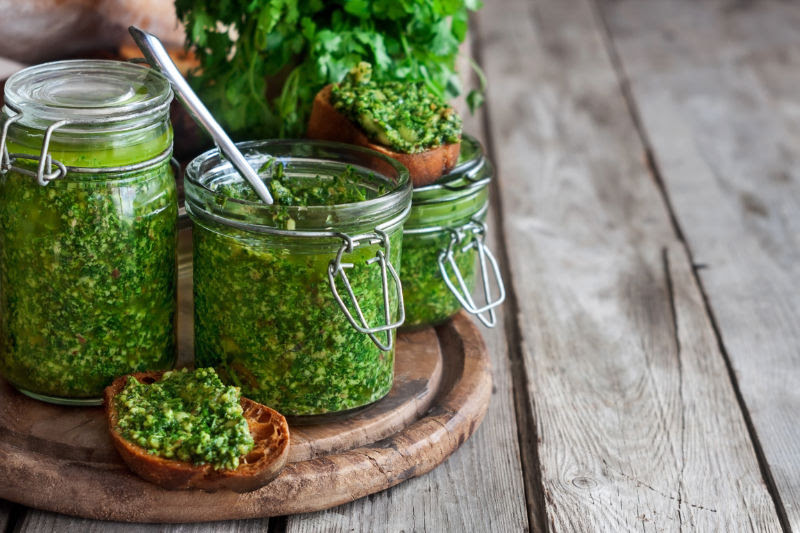
Cilantro is the Chinese parsley and has been used medicinally for over 7,000 years. Cilantro binds with heavy metals stored in our bodies and it is probably THE MOST powerful chelator
known to humans. Sunflowers are known for cleaning radioactivity up to 95% from the underground up into their root system. This miracle was discovered after the Chernobyl Nuclear plant accident
happened in 1986, as sunflowers fields around it have performed wonders in cleaning and detoxing the soil. We have added chlorella to the bunch because cilantro can mobilize more toxins than it can carry out of the body, and chlorella is a potent intestinal toxin-absorbing agent necessary for efficient elimination. According to Ayurveda too many greens and nuts can be hard to digest so ginger and Cayenne are added to the recipe to bring fire and balance digestion.
Ingredients: (use organic as much as you can)
- 4 cloves garlic, peeled
- 2/3 cup quality olive oil
- 1/3 cup Brazil Nuts (Selenium)
1/3 cup Sunflower seeds (Cysteine)
1/3 cup Pumpkin seeds (magnesium, zinc)
2 cups packed fresh Cilantro (vitamin A) - 4 Tbsp fresh lemon juice (vitamin C)
1/2 tsp Ginger powder - dash of Cayenne pepper
- Bragg’s Liquid Aminos or Miso paste to taste
- 2 tsp Dulce flakes or powder (seaweed packed with iodine),
optional 1 tsp chlorella
Directions:
- Blend all ingredients in a blender.
- Pulse till a smooth paste forms then add Bragg’s or Miso.
- Store in glass jars and refrigerate.
- Eating 2 tsp a day, every day during the detox program, is enough to substantially chelate heavy metals like mercury, lead, and aluminum from the body.
SWEET CURRY/MUSTARD DRESSING
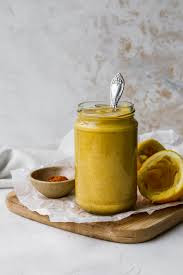
- 2 tsp curry powder
- 1/2 cup rice wine vinegar or rice vinegar, unseasoned
- 1 clove garlic, peeled
- 1 Tbsp chopped cilantro
2 tsp Dijon mustard - 1/4 cup raw unfiltered honey (preferably local)
1 cup olive oil - Salt and pepper to taste
Directions:
- Blend till smooth. Store in the fridge.
- The dressing has many detoxing properties.
Other items to have on hand:
- Quinoa
- lettuce
- vegetables of your liking
- apple cider vinegar
- french goat cheese
- organic eggs
- kalamata olives
- avocados
- cherry tomatoes
- Lemons and Limes
Wellness 2022: Detox – Fitness

Fitness Focus – Yoga for Detoxing
Since this week we are focusing on detox, I thought we would slow down a bit and do some yoga!
Now for today’s workout:
Wellness 2022: Detox – Science

1. Buy Organic
When you are on an alkaline diet, it is important to know where your food grows. The soil in which fruits and vegetables are grown makes a difference in the alkalinity of foods. If you buy organic, the package should tell you where the food comes from, soil types, and more. The vitamin and mineral content of the food tends to be higher when farmers go organic.

2. Eat More Vegetables and Fruit
Fruit and vegetables are a key component in the alkaline diet, as they have the correct pH level. Fruits that are good for an alkaline diet include raisins, dates, bananas, figs, and watermelon. Many vegetables are great for people who choose an alkaline diet as well, such as fresh mushrooms, cucumber, tomatoes, broccoli, cabbage, celery, beets, and jicama. When choosing fresh fruits and vegetables, it is best to pick organic.

3. Drink Alkaline Water
Alkaline water differs from regular tap water — it has a higher pH level your body needs when on an alkaline diet. Regular tap water or purified water has a lower pH level. If you don’t have alkaline water in stores around you, adding a small amount of baking soda, lemon, lime, or pH drops to your water will raise the pH level to the alkaline side of the scale.

4. Add Herbs and Spices
Some herbs and spices can help to change the pH level in your body to the alkaline side. Ginger, cinnamon, curry powder, mustard seed, and chili pepper have the highest alkalinity of the spices. When preparing meals, add some of these spices to your meal for an alkalinity boost. Lots of herbs and spices have other nutritional benefits, but these are the ones that will help to change your pH level.

5. Eat Plant-Based Protein
If you try an alkaline diet, it is best to stay away from animal proteins such as beef, pork, and chicken. Other options for protein will give you the alkalinity needed for your diet. Some of these foods include almonds, navy beans, lima beans, and most other types of beans. There are a lot of recipes out there that include these plant-based proteins that will ensure you won’t miss your meat. On an alkaline diet, you may eat one serving of animal protein daily to keep a proper balance of vitamins and minerals in your body.

6. Eat Raw Foods
You lose vitamins and minerals if you cook vegetables. When you are on an alkaline diet, the best thing to do is to eat vegetables in their natural, raw form. If you choose to cook vegetables, the best way is to steam them for a short period. Steaming vegetables allows the majority of the minerals and vitamins to remain inside the vegetable.

7. Drink Green Drinks
Green drinks come from green vegetables and things like wheatgrass and bean sprouts. They are available in powder form at health food stores, or you can make your own by blending fresh vegetables in a blender. There are many recipes available online to find your favorite or mix up your options. Fresh vegetables contain chlorophyll, which can help to raise the alkalinity of your blood and change your body’s pH level.

8. Foods to Avoid
With the alkaline diet, there are quite a few foods you should avoid. These foods are highly acidic and are considered to be unhealthy for someone who is trying to change their pH level. These foods include packaged and processed foods with a high amount of sodium, eggs, cereal, any grains or oats, pasta, and bread. Specifically, your nutritionist may suggest you avoid fish, sugar, some dairy products, protein supplements, and grains in general.

9. Drinks to Avoid
There are a lot of drinks you wouldn’t think would cause a pH imbalance. Milk, for example, is highly acidic. Research has shown that drinking too much milk can contribute to osteoporosis because of the high acidity in it. Also avoid caffeinated beverages such as tea, soda, and energy drinks. If you choose to try an alkaline diet, steer clear of alcoholic beverages, as they are also highly acidic.

10. Meal Ideas
There are many alkaline-friendly recipes available for breakfast, lunch, and dinner. A non-dairy apple parfait is a popular meal for breakfast when on an alkaline diet. Lunch may include a leafy green salad with a green goddess dressing or one made from avocado and cumin. Dinner might consist of a kale pesto pasta made with zucchini noodles or an onion and bell pepper masala. There are plenty of recipes available online when you are starting out on the alkaline diet. If you choose to try this diet, you may also speak with your doctor or a dietician for help with meal ideas and for a list of foods to avoid.

Important Recipe
Alkaline Vegetable Broth:
Ingredients (Makes 2.5L)
- 1-2 leeks
- 1 medium potato
- 8 oz baby Bella or button mushrooms
- 2 garlic
- 2-3 medium yellow onions
- 4 carrots
- 1 bunch of celery stalks
- 1 cup lentils
- 4 big or 6 medium organic tomatoes, or 1 can Muir Glen organic diced tomatoes
- bunch of fresh parsley & fresh basil
- 2 bay leaves
- 1 Tbsp black peppercorns
- 1 Tbsp Himalayan salt
- 10 cups of filtered water
- Heat oil in a large 3 to 4 quart (3 to 4 L) saucepan over
medium heat. - Add garlic, onions, and leeks.
- Cook for 5 minutes, or until softened, uncovered.
- Stir in carrots, potato and celery; cook for 8 minutes, stirring occasionally, uncovered.
- Add tomatoes, mushrooms, lentils, parsley, basil, bay
leaves, salt, and pepper. Cover with water. Bring to a boil. - Reduce heat to low; simmer, covered, for 30 minutes or longer, stirring often.
- Strain through a fine sieve, pressing against vegetable
mixture with the back of a large wooden spoon to extract all the liquid. - Discard solids.
- Cool before storing, covered, in refrigerator or freezer.
Wellness 2022: Detox – Intro

Why do a detox? Here are some reasons why…
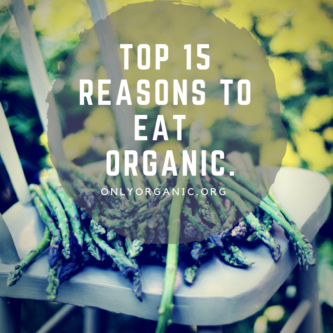
1. Persistent Pesticides
Eating organic reduces the number of chemicals in your diet namely persistent pesticides. The use of insecticides, fungicides, fertilizers and weedkillers are strictly monitored in organic food production.
Organic farming produces healthy food without the use of toxic pesticides. While some organic farmers do use pesticides they are primarily derived from natural substances. These natural pesticides must be approved for organic production. The National Organic Standards Board, or NOSB, and the National Organic Program, or NOP, maintain a list of materials approved for use in organic production. This list is determined with input from farmers, business owners, consumer advocates, and the public. The general rule for the national list is that naturally occurring materials are allowed, and synthetic materials are prohibited, however there are some exceptions. Once the NOSB and NOP add a material to the national list, third-party organizations like the Organic Materials Review Institute evaluate new products to make sure they’re in compliance. It’s a process that involves hundreds of technical experts.
2. GMOs
Eating organic is the best way to avoid GMO foods, ingredients and contamination. The use of genetically modified organisms, or GMOs. is prohibited in organic products. This means an organic farmer can’t plant GMO seeds, an organic cow can’t eat GMO alfalfa or corn, and an organic soup producer can’t use any GMO ingredients. To meet the USDA organic regulations, farmers and processors must show they aren’t using GMOs, and that they are protecting their products from contact with prohibited substances, such as GMOs, from farm to table.
3. Health
No artificial colors, flavors or preservatives are allowed in organic food. Cleaner food means cleaner diets which leads to a cleaner bill of health.
No artificial preservatives, colors or flavors are allowed in organic food. Fewer than 40 synthetic substances can be used in organic packaged foods, and only after they have been reviewed by independent and government experts. By contrast, thousands of chemicals can be added to conventional packaged foods, including preservatives, flavors and colors linked to health problems.
The issues with these synthetics additives that are found in processed conventional foods is that they are targeted at children and parents. These chemically addictive additives lead to many health problems. The hidden cost in this “cheap” food is the fees American’s are paying with their health. From diabetes to obesity, to ADHD, the food-related diseases are at an all-time high. As the New York Times recently put it, “Our Food Is Killing Us.”
4. Soil Health
Organic farming creates healthy soil. Healthy soil creates healthy food and a healthy environment. Healthy soil is the basis for organic agriculture. Organic farmers use natural organic fertilizers and soil amendments like organic matter (things you can compost), green manures (cover crops grown specifically for soil improvement, e.g. legumes), and animal manures (with safety restrictions) to build healthy soil. When food is grown in healthy soil, crops are better able to resist disease, survive drought, and tolerate insects.
Organic food contains more vitamins, minerals, enzymes and micronutrients than conventionally raised food. There is a growing body of evidence documenting how farming methods can influence the nutritional content of foods.
- A six-year study found more antioxidant activity and higher flavonol content in organic onions over conventional.
- Meta-analysis published 2016 in the British Journal of Nutrition, found that organic dairy and meat contain about 50 percent more omega-3 fatty acids. the increase is the result of animals foraging on grasses rich in omega-3s, which then end up in dairy and meats.
- An 18-month milk study in 2013 found that organic production enhances milk nutritional quality by shifting fatty acid composition.
- Meta-analysis published in 2014, in the British Journal of Nutrition, found that organic crops had significantly higher antioxidants than conventional crops, including 19% higher levels of phenolic acids, 69% higher levels of flavanones, 28% higher levels of stilbenes, 26% higher levels of flavones, 50% higher levels of flavonols, and 51% higher levels of anthocyanines.
- A ten year comparison study of tomatoes conducted in 2008, at the University of California, Davis, found that organic tomatoes have almost double the concentration of a beneficial flavonoid known as quercetin, compared with conventional tomatoes grown on an adjacent field.
- In a 2001 study published in The Journal of Alternative and Complementary Medicine, they look at already published literature to compare the nutrient content in five common organic vegetables versus “conventionally” grown ones. In organic carrots, spinach, lettuce, potato and cabbage there was significantly more Vitamin C, Iron, Magnesium and Phosphorus and less nitrates than the alternatively grown ones.
- A 2019 study on dairy products had findings showing antibiotics were detected in 60% of conventional milk samples whereas organic samples did not contain antibiotics. By testing milk straight off store shelves, researchers were able to uncover exactly what consumers are ingesting when they choose conventional or organic milk.
6. Food Future
Eat organic because supply meets demand. As consumers we have three votes per day for our food future. This puts us in a powerful position to design the $1 trillion food industry market in America. Spending dollars in the organic sector is a direct vote for a sustainable future for the many generations to come. Although organic is the largest growing sector in the food industry, it still only accounts for around 5% of purchases. The more consumers demand organic, the more readily it will be made available in larger supply. Large grocery outlets like Costco and Wal-Mart carry organic food but so do small Co-Ops and corner stores. Costco passed $4 billion in annual sales from organic produce in 2016, eclipsing Whole Foods for the title of organic heavyweight champion in the U.S. Organic farmers couldn’t grow produce fast enough to supply the retailer so they decided to lend money to farmers to buy land and equipment to grow more organic produce. If the organic industry continues to grow, more opportunities, like the one Costco provides to farmers, will be available to people looking to move into the organic space.
7. Sewage Sludge
Organic farming never uses sewage sludge. Sewage sludge is a product of wastewater treatment and contains numerous known and unknown hazardous materials – including everything that is flushed into the sewer system. Once treated, sewage sludge can be applied to agricultural cropland as fertilizer – meaning, this chemical soup that is often full of toxic compounds, nanomaterial, hormones and dangerous pathogens, are applied to the very food we eat. But not on organic food!
Organic products are managed according to defined processes for planting, growing, raising and handling. A very important part of the process-based regulatory framework is the prohibition of certain methods in organic production and handling. Methods like irradiation, sewage sludge, and genetic engineering are all expressly prohibited from being used when growing or processing organic foods.
8. Irradiation
Organic food is never irradiated. Irradiated food is exposed to an intense ionizing radiation. This is done in a processing room for a specified duration. With food irradiation, radiant energy (electrons, gamma rays or x-rays) breaks chemical bonds and the intention is to reduce microorganisms. The concern is that radiation is known to cause cancer. Irradiated food does not meet the U.S. Department of Agriculture’s definition of organic.
The USDA works with the FDA to incorporate food irradiation where it is appropriate. The USDA also controls the use of the word “organic” on food labels. Foods that have been irradiated, no matter how they are grown or produced, cannot be labeled as USDA-certified organic product.
9. Climate Change
Organic farming supports carbon sequestration, which helps to mitigate rising atmospheric carbon dioxide levels. The primary benefit of organic crop and livestock production, compared to conventional agriculture, is that it is focused on soil-based production with underlying principles of maintaining or improving soil quality. Healthy soil counteracts climate change by pulling carbon out of the atmosphere. This is similar to how native ecosystems, including prairies and forests, act as carbon sinks in nature.
Recent data from farming systems and pasture trials around the globe show that we could sequester more than 100% of current annual CO2 emissions with a switch to regenerative organic agriculture practices.
10. Pollinators
Organic farms and crops are pollinator-friendly and protect bees, pollinators and wildlife from toxic chemicals. The Organic Center released a report showing that organic farming has an important role to play in supporting the health of our pollinators. Large-scale, chemically intensive agricultural production has been implicated as a major source of threats to pollinators. Increasingly, scientific research demonstrates that the use of toxic synthetic pesticides, destruction of native habitat, and a decrease in nutritious forage due to extensive use of mono-cropping are detrimental to pollinators. A number of studies reviewed in this report have demonstrated that organic farming practices alleviate many threats to honey bees and that organic farms support significantly more pollinators than conventional farms. This is because organic farming standards not only prohibit the use of synthetic pesticides, many of which are highly toxic to bees and can be persistent in the environment but also require that organic producers manage their farms in a manner that fosters biodiversity and improves natural resources.
11. Farmworkers
Organic farming doesn’t expose neighboring communities and farmworkers to dangerous persistent pesticides.
Farmworkers are at great risk for exposure to agricultural pesticides and the adverse health impacts that can occur as a result. Neighbors are also at risk for exposure through pesticide drift if they live near a big farm or a conventionally managed park or playing field. Pesticide drift is a threat to human health as well as to wildlife and ecosystems.
In 2018, the Organic Center released a report that details the impacts of the conventional use of synthetic pesticides on farmer and farmworker health – and how organic can be used as a model to decrease the exposure of this important part of our society.
A recent study published in Environmental Research adds evidence to a larger body of research showing that eating organic very well may reduce pesticides in the human body. The study found that families eating a 100 percent organic diet rapidly and dramatically reduced their exposure to four classes of pesticides—by an average of 60 percent—over six days.
12. Environment
Support a healthy environment for all of us by choosing organic food. Organic farming practices result in numerous environmental benefits.
- Organic farming rebuilds soil health and stops harmful chemicals from getting into our water supplies. Water and soil are two extremely important resources necessary for growing food.
- Organic farmers don’t rely on non-renewable oil-based fertilizers and pesticides we may not always have access to.
- Organic farming results in greater biodiversity.
- Organic farming releases fewer greenhouse gas emissions.
13. Contamination
GMO contamination is a reality, but you have the power to reject GMOs by choosing organic. Recently in 2019, farmers in France and Germany were digging up thousands of hectares of rapeseed fields after traces of genetically engineered crops (GMOs) banned for cultivation were found in seeds sold by Bayer. In the same year, the USDA confirmed the discovery of unapproved, genetically engineered wheat plants growing in an agricultural field in Washington State.
The Center for Food Safety has documented a few other episodes in which pollen or seeds from genetically engineered crops have contaminated conventional crops, often causing seed or product recalls, and other problems for farmers and consumers. The use of GMOs is prohibited in organic products.
14. Water
Choosing organic protects the streams and lakes downstream from toxic runoff that conventional farming produces. Many byproducts of conventional farming threaten watersheds and pollute drinking water. Runoff from farms carries soil and farm inputs-like fertilizer and pesticides- into nearby creeks and streams. Excess nitrogen and phosphorous that has leeched into the water causes an overgrowth of algae in a short period of time (algae blooms). The overgrowth of algae consumes oxygen and blocks sunlight from underwater plants. The lack of oxygen makes it impossible for aquatic life to survive, creating dead zones. The largest dead zone is in the Gulf of Mexico and occurs every summer as a result of nutrient pollution from farms leeching and running down through the Mississippi River.
Organic farmers, like any others, need to provide nitrogen and phosphorus for crops grow. But unlike conventional farmers, organic farmers rarely rely primarily on chemical fertilizers, which would be costly and inconsistent with the organic approach to soil fertility. Organic farmers use natural organic fertilizers and soil amendments like organic matter, green manures, and animal manures to build healthy soil. The use of organic soil amendments rather than synthetic fertilizers provides crops with complex nutrient sources that are slow to release and limit their loss into the soil and into our waters.
Other solutions to curbing farm runoff include the use of buffer zones, removing the use or need for synthetic inputs, and creating healthy soil. Cover cropping helps prevent soils from washing away, and help recycle nutrients; crop rotations prevent nutrient stripping from the soil; and the composting of plant and animal materials, and the use of manure as fertilizer results in higher rates of nitrogen recycling reducing the introduction of new nitrogen pollution to the environment. All of these practices are already common strategies in organic agriculture. Crop rotations also prevent nutrient stripping from the soil.
15. Cancer
Eating organic can reduce your risk of cancer. A new study in JAMA Internal Medicine found that those who ate organic foods frequently lowered their overall risk of developing cancer. Specifically, those who primarily eat organic foods were more likely to ward off non-Hodgkin lymphoma and postmenopausal breast cancer compared to those who rarely or never ate organic foods.
Homework:
As you make your grocery choices going forward, we want you to begin to choose organic. Currently, we are going to stick with our plant-based guidelines…just enhance them. Stay tuned for important recipes coming your way. These last few weeks we will be “cleaning things up”, from the inside out.
Please know, up until now, we have simply given you guidelines. As we work into our final phase of this 8-week program, you will receive an entire “protocol”. We hope you will give it a shot. As we trickle the important recipes your way, plan on gathering the ingredients and have them ready.
See you tomorrow with even more important information!
Wellness 2022: Plant Based – Rest & Integrate
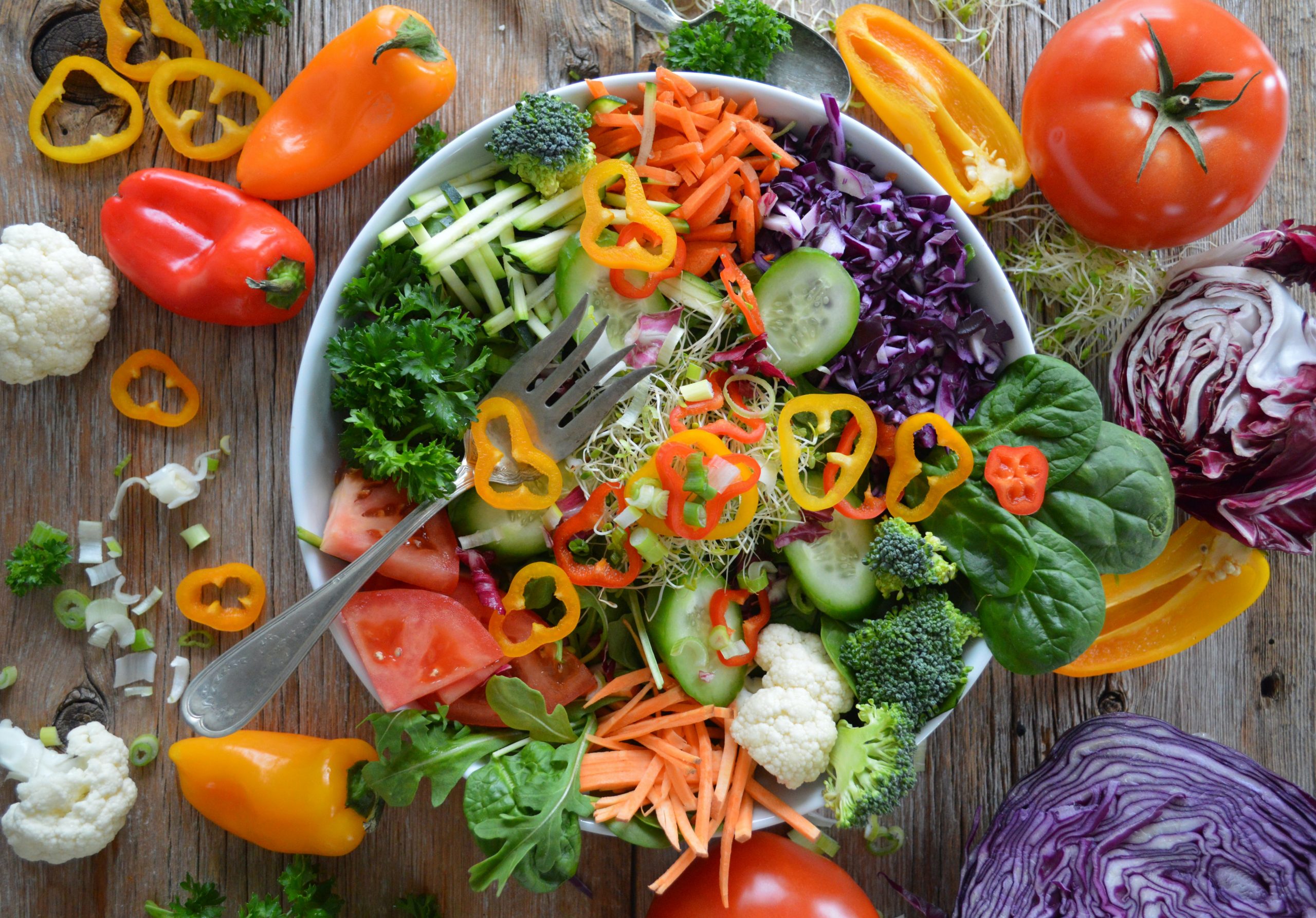
Healing from the inside out…

As we have led you through these different diet/lifestyle options, we hope that you have realized what work for you and makes you feel good whether that is in terms of increase energy, better digestion, more relaxed. With this week, we encouraged you to learn more about how a plant based diet can benefit you. Going fully plant based may understandably be a bigger step than you are ready for right now so just begin to add more plants to your diet or even commit to a day or two a week where the meal is solely plant based.
For many, myself included, a plant base diet can improve digestion, skin tone, and overall energy. What you are doing is self-healing. But as we have mentioned before, wellness is not just physical, it is a combination of mind, body, and spirit. I know it might sound a little abstract but it isn’t as complex as you might think.
For centuries, ancient Eastern medical models were focused on energy. That’s because human bodies can self-heal. You can observe your body’s capacity to repair itself as you recover from an injury or wound. Self-healing isn’t difficult at all. Try channeling your body’s energy and use your thoughts and feelings to alter your energy frequency. It’s like switching channels from a pessimistic news channel to your preferred comedy series and feeling comfortable with that switch.
Your day should proceed in a unique direction to ensure you embrace ease, breeze, and even “magic” into your life. A strong intention can change your life physically, mentally, emotionally, and spiritually.
Here are 5 easy ways:
- Sit Comfortably and Be Mindful of Your Breath
No need to adjust your breathing pattern — just pay close attention to the flow — inhale, exhale, inhale, exhale. No decision, no change — just observe. This is done to make you feel like you are living in the “present” and avoid any mind-boggling thoughts from intervening in your mind for the next few moments. - Keep Your Hand (Palms Together) in Front of You and Rub Them Rapidly for 30-60 Seconds
Let your hands get warm from friction, and try to feel the warmth. Put a thin smile on your face as you rub your hands and make the most of this time about yourself. Smiling itself is soothing and can change your mood within seconds. - Hold Your Hands 6-8 Inches Away From Each Other, Facing Each Other and Feel the Flow of Energy
This energy has always been there. All it needed was the very briefing of your intention and awakening your consciousness. You feel this energy, channeling inside you. Remember: That’s part of you. Stay positive—doesn’t it feel fantastic? - Close Your Eyes. See If You Can Transfer Energy Into Your Body
There’s no such thing as the “wrong way” of doing it. You can try to awaken your body’s energy with your intention to feel and heal your body and mind.
See if you can transfer the energy through some part of your body. You can experience tension or illness while doing so. Hold it there — understanding you are giving your body love and “healing energy.” When you feel like you’re losing contact with sensing the energy, rub your hands together once again.
There’s no judgment involved and there is no wrong way of doing it. Imagine the energy in a way that suits you the best. Maybe you just want to experience it, or maybe you want to imagine it as a white light — if that’s the easiest way for you! Play with this move and smile while doing it. - Keep Working With This Surge of Energy
Send the energy to various parts of your body. Observe how it feels entering different parts. This energy will strengthen those parts that normally bring pain — feel grateful for finally realizing this innate ability. Feel the calming strength of the body’s parts. Greet your body for waking up to this consciousness and healing. Working with this energy flow for only 10 minutes will bring a sense of joy and peace you might have thought impossible just minutes before.
Now question yourself, how did it feel? When you first feel this energy you will be amazed by the fact that this energy was present in your body all along yet you had no idea about it.
In just 10 minutes, you can alter your energy flow and condition. You will heal your body, mind, and spirit.
Can Your Body Really Self-Heal?
The human body was born to heal. From renewable cells to emotional healing, the body can self-heal in several ways. You can learn to improve your innate self-healing abilities by learning to channel your body’s energy.
The energy healing experience is special to any person who attempts to try it. Most people who have experienced energy healing describe it as calming, comfortable, and physically friendly. However, if you are thinking of experiencing the energy-healing process, you should be ready for energy shifts and mood swings in your body.
Wellness 2022: Plant Based – Takeaway

Our Plant-Based week has been a great transitional time into better wellness. At this point, we want you to settle into this a little bit longer. Check out the information below. Adding these important herbs into your diet has so many amazing healing properties.

Fresh herbs not only add flavor without calories, they may also serve up health benefits as healing foods. “Herbal medicine has been used as kitchen medicine for thousands of years, and while our body’s response to these natural treatments has not changed, we now have more global choices than ever,” says Steven Chasens, an herbalist and acupuncture physician at Coral Gables Acupuncture in Florida. “There is no substitute for competent medical care and routine checkups. However, to avoid disease and live strong, a good diet and sensible eating is critical.” A basic knowledge of how food and herbs can help what ails you is key to your sensible eating plan, Chasens explains. Here are 10 healing herbs to add to your recipe rotation.

Rosemary for Heart Health
Rosemary is an herb that may help prevent damage to blood vessels and aid with cardiovascular health, says Keri Glassman, MS, RD, CDN, New York City-based author of The O2 Diet. The healing herb may also help with indigestion and memory function and reduce muscle and joint pain when applied topically. Rosemary’s active ingredient, carnosic acid or carnosol, might also prevent the spread of cancer, a study published in the journal Cancer Treatment Reviews found. A very strongly flavored herb, rosemary goes great with hearty foods, such as meat and potatoes.
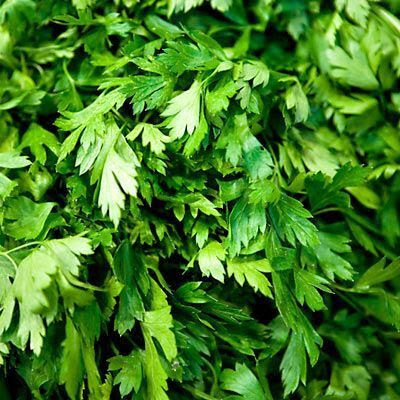
Parsley for Hypertension
Parsley is high in antioxidants, vitamins A and C, and the chemical apigenin, which may help inhibit the growth of cancer cells several studies have found. It also has been shown to have heart-healthy effects, reducing high blood pressure. A quick way to put this healing herb in your diet is as a chopped garnish, but it can also play a starring role and add great flavor to dishes.

Ginger for Gastrointestinal Health
Ginger appears to be effective for treating gastrointestinal disturbances, especially in relieving diarrhea or nausea caused by morning sickness during pregnancy and nausea and vomiting after surgery or after cancer patients’ chemotherapy treatment. A powerful anti-inflammatory, ginger has also been shown to reduce joint pain. In foods, ginger doesn’t have to be reserved for sushi — consider adding this healing food.

Cinnamon for Stable Blood Sugar
Cinnamon twig appears to have some antibiotic and anti-inflammatory properties. This healing food may also help treat gastrointestinal disturbances, including diarrhea and indigestion. Cinnamon seems to have antioxidant effects as well. Glassman says that cinnamon is excellent for controlling blood sugar levels and has been shown to lower bad cholesterol levels in people with type 2 diabetes.

Garlic for Cancer Protection
Garlic is most well-known for the healing herb’s potential anti-cancer effects, Glassman says, as well as its ability to slow other diseases, including hypertension and even the common cold. One of the most commonplace healing herbs, garlic is a great flavor enhancer in stews and soups.
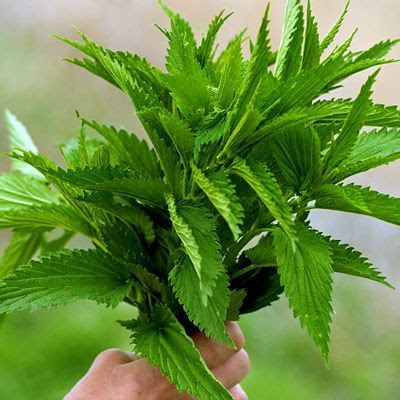
Stinging Nettle for Joint Pain
Stinging nettle, also known simply as nettle, appears to be effective in reducing the inflammation associated with arthritis. According to Susun Weed, an herbalist with the Wise Woman Center in Woodstock, N. Y., stinging nettle is great for controlling dandruff, making hair glossy, and improving overall hair health. It may also be effective in treating benign prostatic hyperplasia (BPH), a condition that involves enlargement of the prostate. Weed suggests infusing stinging nettle in tea, but this healing food may also be used in a range of recipes.
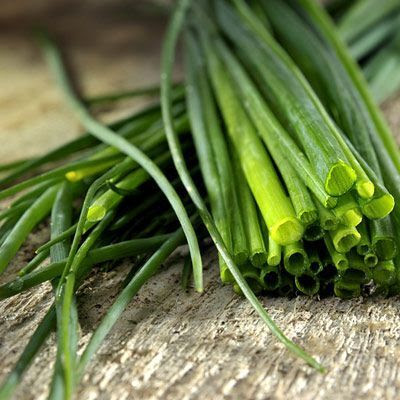
Chives for Cancer Protection
That tasty green garnish on your baked potato is rich in vitamins A and C, known for their antioxidant effects. The healing herb has also been shown to reduce the risk for gastric cancer. Sprinkling chives on salads and pasta is great, but cooking with chives is equally as delicious.
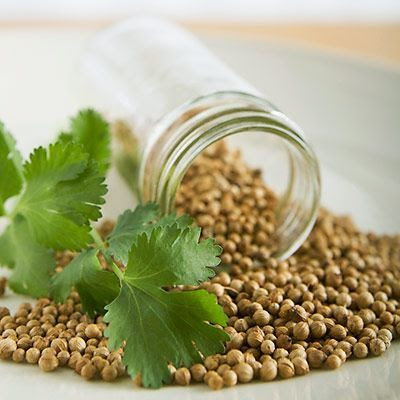
Coriander for Bad Cholesterol
“Coriander may aid in lowering ‘bad’ cholesterol and increasing ‘good’ cholesterol,” Glassman says. “It can also help lower blood sugar levels as well.” This healing food also appears to have anti-bacterial and anti-fungal properties. Coriander is a staple in many cuisines, from Indian to Thai. For a light dinner or lunch option, add this healing herb to roasted vegetables or a nourishing stew.
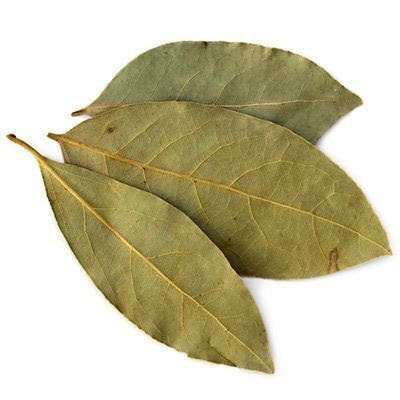
Bay Leaves for Sinus Relief
There’s a reason why bay leaves are in so many cold-soothing stews. “Bay leaves contain an oil with the active ingredient cineole, which eases discomfort caused by sinusitis,” says Rovenia Brock, PhD, a nutrition expert and author. “Studies show that inhaling the essential oil can reduce inflammation and fluid buildup in the sinuses.” In addition, bay leaves may play a role in preventing heart disease, treating arthritis, and supporting the immune system. Bay leaves are a great type of herb for adding flavor to stews, soups, and sauces. Just remember to remove them before serving; they generally should not be eaten whole.
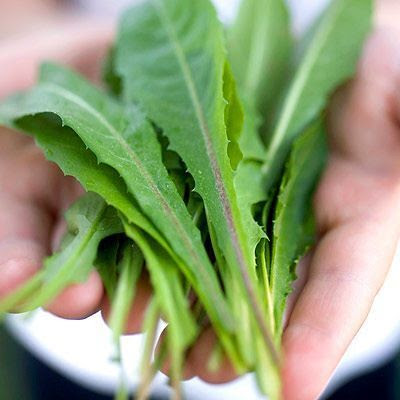
Dandelion for Digestion
According to the University of Maryland Medical Center, dandelion is considered a natural mild diuretic, which could make the herb helpful in treating poor digestion, liver disorders, and high blood pressure. Dandelion root may also improve gastrointestinal disturbances as well as liver and gall bladder function. “You can use any part of the dandelion — leaves, flowers, roots, even stalks — as medicine,” says Weed. “You can pick it at any time you wish. And you can prepare it as a tea, an infusion, a food, a vinegar, a tincture, or a honey.”
With the wide variety of types of herbs, options for adding healing foods to your meals are abundant. “Herbal medicine is people’s medicine,” Weed says. “It is easy, accessible, and generally safe. We know that drugs can damage our health, so instead reach for a nourishing or aromatic healing herb to help you maintain or regain health.”
Wellness 2022: Plant Based – Videos

Explore the versatility of a plant base diet with these easy recipes:
Hey everyone, this is Eliza. I have been primarily plant based for a few months now. I have teenagers so even though they want to be plant based, they also want their same comfort foods from when they ate meat. Navigating meat substitutes can be daunting. I wanted to share with you the ones I have found to be the best:
Meats Substitutes — everything from ground beef to chicken nuggets:
Dairy Substitutes — cheese and eggs
All are available at local grocery stores.
Try different brands and experiment. That’s what I did. Not every brand will be to your taste but you will be surprised at how good some of them are.


